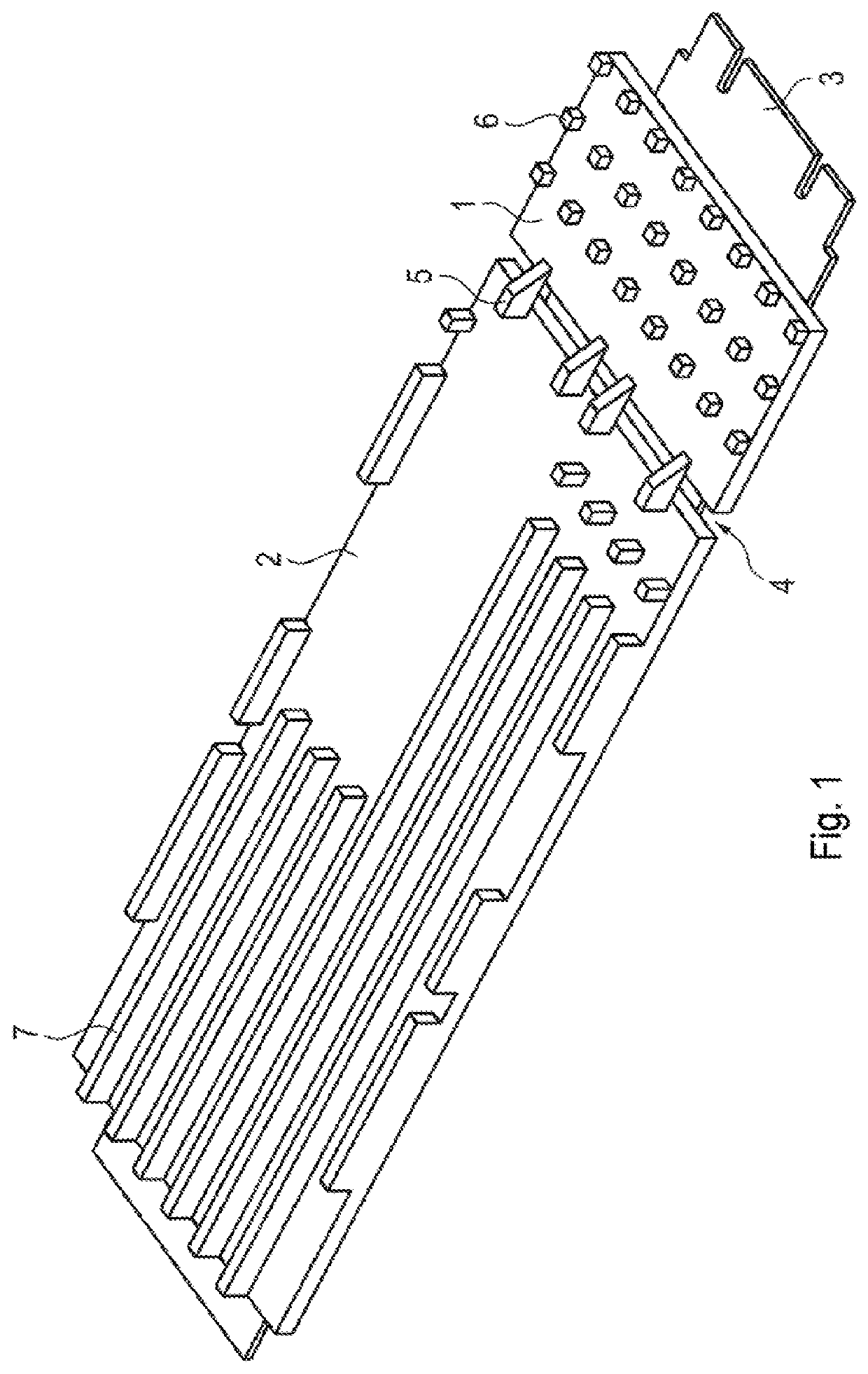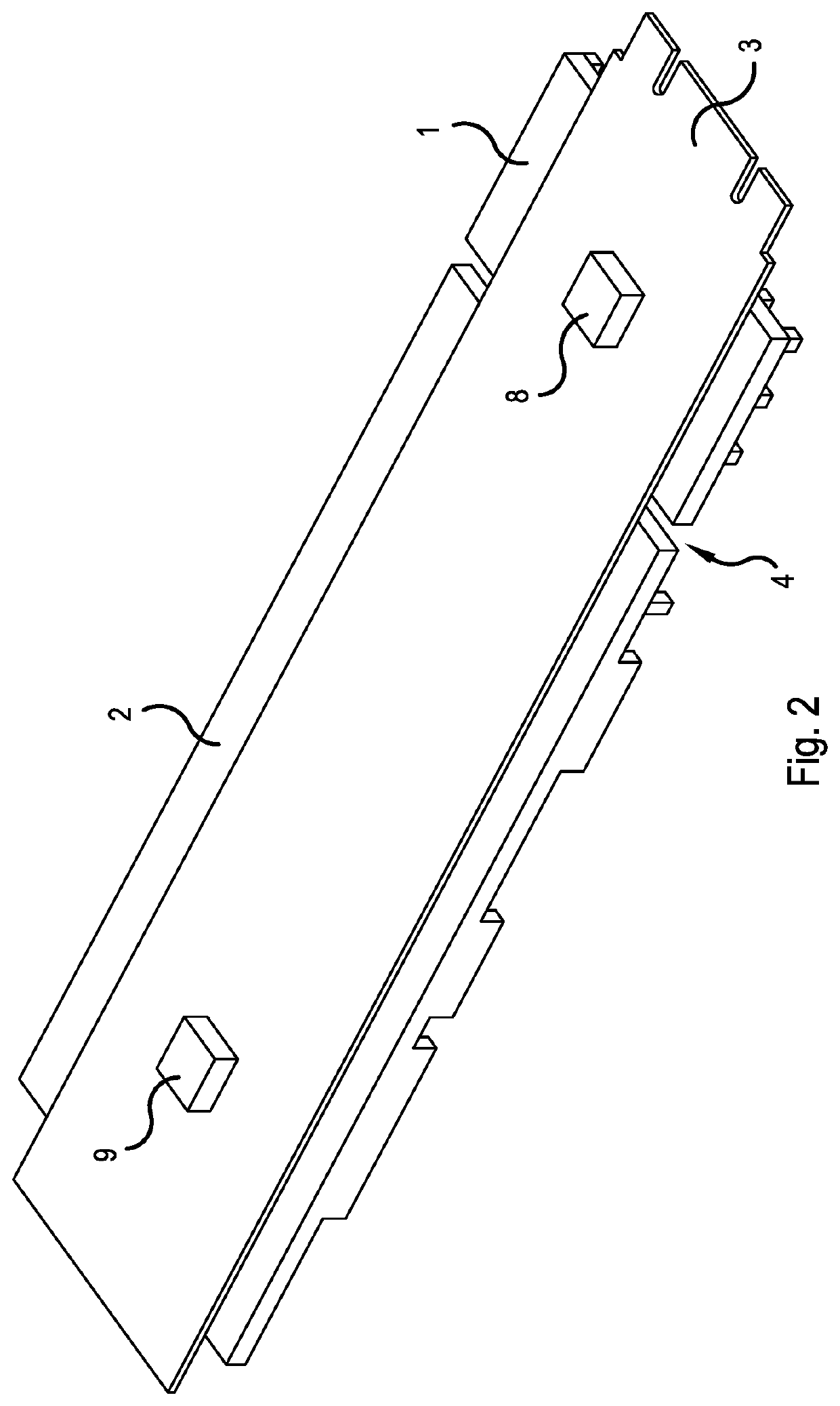Multi-zone heat sink for printed circuit boards
- Summary
- Abstract
- Description
- Claims
- Application Information
AI Technical Summary
Benefits of technology
Problems solved by technology
Method used
Image
Examples
Embodiment Construction
[0018]In FIG. 1, a heat sink resting on a large area of a printed circuit board 3 is depicted with a first sub-area 1 and a second sub-area 2. A gap 4 that crosses the full width of the printed circuit board extends between the first sub-area 1 and the second sub-area 2; this gap forms an air gap between the first sub-area 1 and the second sub-area 2, and consequently isolates the first sub-area 1 thermally from the second sub-area 2. Four metallic bridges 5 span the gap 4 and form a mechanical connection of the first sub-area 1 to the second sub-area 2.
[0019]Arranged on the printed circuit board 3 are electronic components, not visible beneath the heat sink in FIG. 1. As shown in FIG. 2, a first electronic component 8, for example a flash controller, is arranged underneath the first sub-area 1, and a second electronic component 9, for example a flash memory chip, underneath the second sub-area 2. The flash controller can be properly operated up to an operating temperature of 125° C...
PUM
 Login to View More
Login to View More Abstract
Description
Claims
Application Information
 Login to View More
Login to View More - R&D
- Intellectual Property
- Life Sciences
- Materials
- Tech Scout
- Unparalleled Data Quality
- Higher Quality Content
- 60% Fewer Hallucinations
Browse by: Latest US Patents, China's latest patents, Technical Efficacy Thesaurus, Application Domain, Technology Topic, Popular Technical Reports.
© 2025 PatSnap. All rights reserved.Legal|Privacy policy|Modern Slavery Act Transparency Statement|Sitemap|About US| Contact US: help@patsnap.com


